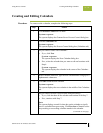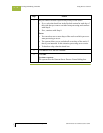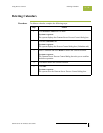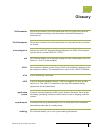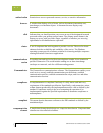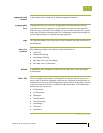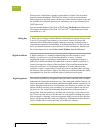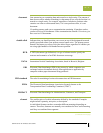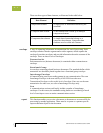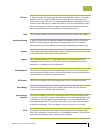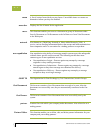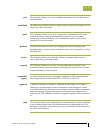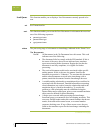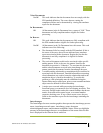
Gentran:Server for Windows – November 2005 Gentran:Server for Windows User’s Guide
GL - 4
Each browser icon displays a graphic representation of paper if the document
location contains documents. The Desk also allows you to access the Partner
Editor subsystem, the Help system, the Process Control function (clock icon), and
the Send/Receive functions (phone icon), and allows you to quit Gentran:Server
(EXIT/door icon).
You can turn the display of The Desk off by clicking The Desk on the View menu.
This toggles the display of The Desk “on” and “off.” A checkmark next to that
item means it is “on.”
dialog box A dialog box (or dialog) contains additional information or options that you need
to act on. If you specify any options, you can select a button to execute the
command. Some dialog boxes display warnings or messages indicating why a
requested task cannot be accomplished. If the dialog box has a title bar, you can
move it to another location on your desktop. To close a dialog box, double-click
the Control menu box or select Close Active Window from the File menu.
digital certificate A digital certificate is a common credential that provides a means to verify
identity. A certificate is a set of data that identifies an entity. A trusted
organization assigns a certificate to an individual or an entity that associates a
public key with the individual. The individual or entity to which a certificate is
issued is known as the subject of that certificate. The trusted organization that
issues the certificate is a Certification Authority (CA) and is known as the
certificate’s issuer. A trustworthy CA will only issue a certificate after verifying
the identity of the certificate’s subject. The data in a certificate includes the public
cryptographic key from the certificate subject’s public/private key pair.
digital signature The essence of public key encryption is that your data is encoded with a complex
mathematical formula that returns two keys. Data encrypted with the first key can
only be decrypted with the second key and data encrypted with the second key can
only be decrypted with the first. You distribute your first key as a public key that
anyone can have and keep your second key as a private key that no one but you
has access to. The reciprocal relationship between the keys allows anyone to
encrypt data with your public key, and then you can decrypt it with your private
key. No one else has access to the data once it is encrypted, including the person
who encrypted it. Similarly, you can encrypt data with your private key, and then
anyone can decrypt that data with your public key. Although this makes the data
freely available, but it ensures that only you could have created it.




